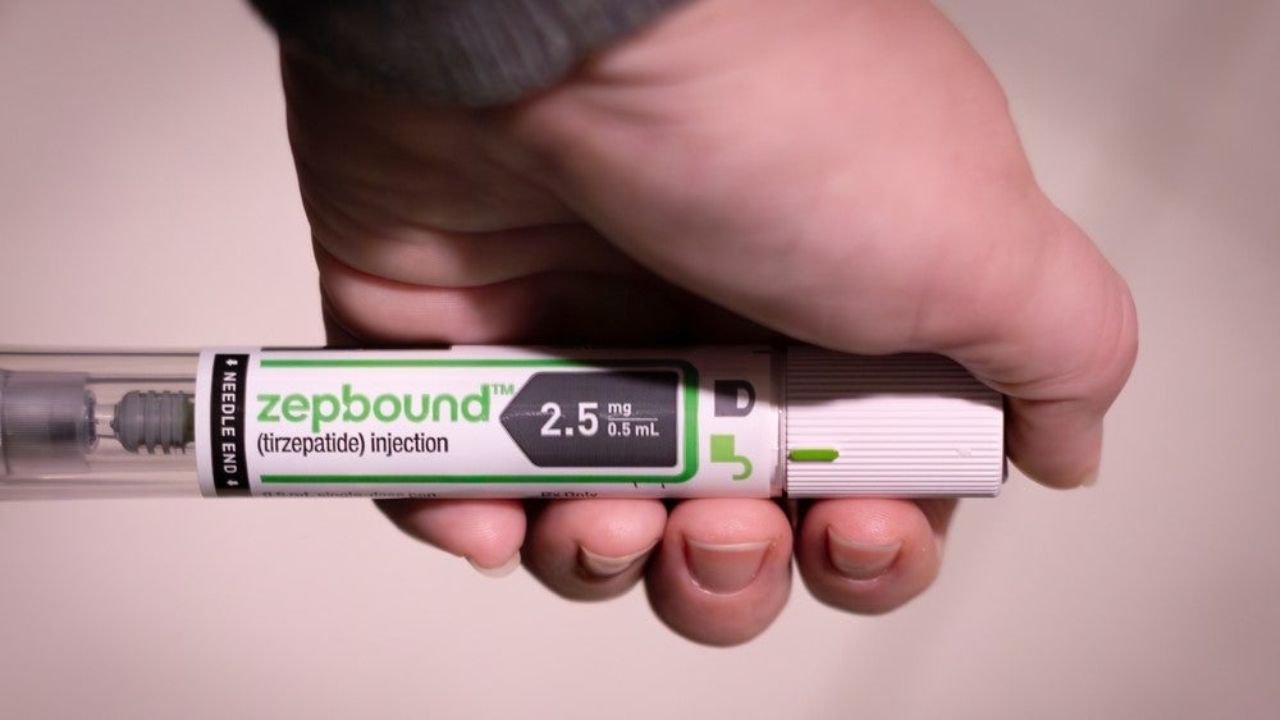In the evolving landscape of weight loss treatments, Zepbound has emerged as one of the most talked-about medications for people struggling with obesity and related health conditions. The approval of the FDA and an increasing number of satisfied users beg the common questions in the minds of many, how does Zepbound work and is Zepbound safe?
This paper addresses such burning questions at length. The next time you consider it on your own or read about it as an option for a loved one, we will discuss what Zepbound is, how it acts on the body, who should (and should not) take it, and what side effects you should anticipate.
What is Zepbound?
Zepbound is an injection that is to be used once a week to aid chronic weight management. It is approved by the U.S. Food and Drug Administration (FDA) and received the approval because it contains tirzepatide, which is already used in Mounjaro and is FDA-approved to treat type 2 diabetes.
The difference in the case of Zepbound is that it is indicated to be used in overweight and obese adults having at least one comorbid condition related to weight gain, like high blood pressure, type 2 diabetes, or elevated cholesterol level. Zepbound is most effective when used together with a low-calorie diet and higher physical activity.
Therefore, when you wonder how Zepbound works, the answer is all about controlling your digestive system and appetite through the latest science of hormones.
Zepbound: How Does It Work?
The question “Zepbound how does it work” deserves a detailed explanation.
Zepbound mimics two natural hormones in your body—GLP-1 (glucagon-like peptide-1) and GIP (glucose-dependent insulinotropic polypeptide). These hormones are activated in your gut when you eat and are responsible for controlling appetite, digestion, and blood sugar.
Here’s how Zepbound works in your body:
- GLP-1: Slows gastric emptying (so you feel full longer), enhances insulin production, and reduces appetite.
- GIP: Works with GLP-1 to help control blood sugar and may improve your body’s ability to burn fat.
Together, they make Zepbound a dual agonist, meaning it triggers two powerful biological responses. This dual action is what sets Zepbound apart from other GLP-1-only medications like Ozempic or Wegovy.
So, to answer once again: Zepbound how does it work? It slows digestion, increases satiety, improves insulin response, and aids in fat burning—making it a multi-pronged approach to weight loss.
Is Zepbound Safe?
Now onto the other popular concern: Is Zepbound safe?
According to studies and medical experts, Zepbound is generally safe for most people when prescribed and monitored by a qualified healthcare professional. However, like any medication, it carries some risks, and not everyone is a suitable candidate.
Common side effects include:
- Nausea or vomiting
- Constipation or diarrhea
- Fatigue
- Stomach pain
- Injection site reactions
These side effects are usually mild and temporary, especially as the body adjusts to the medication.
More serious (but rare) side effects include:
- Pancreatitis
- Gallbladder issues
- Low blood sugar (especially in diabetic patients)
- Thyroid tumors (seen in animal studies)
- Severe allergic reactions
- Mental health changes such as depression
So, is Zepbound safe? For the vast majority of people under medical supervision, yes. However, it should not be used by:
- Pregnant or breastfeeding women
- Individuals with a personal or family history of medullary thyroid carcinoma
- Those with multiple endocrine neoplasia syndrome type 2 (MEN 2)
- Children or adolescents (safety in under-18s is not established)
- People with severe gastrointestinal conditions like gastroparesis
Clinical Data on Zepbound’s Effectiveness
The Zepbound science protects its reputation. A 2022 study published in New England Journal of Medicine suggested the weight loss as the percentage of the body weight decreased by 15 to 21 percent of body weight over 72 weeks depending on the dosage in Zepbound users.
A separate 2025 study reported that long-lasting treatment with tirzepatide (three years) decreased the count of individuals with prediabetes and obesity or their chances of developing type 2 diabetes by a significant amount.
Those figures render Zepbound among the best weight-loss drugs on the market nowadays.
Who Can Use Zepbound?
Zepbound is meant to serve those 18 years and above who experience obesity or overweight-related symptoms of ill health. In particular, it is accepted to be prescribed to persons with body mass index (BMI) 30 or above, or those with BMI 27 or more and who also have such diagnoses as high blood pressure, type 2 diabetes, high cholesterol, or sleep apnea.
It is most appropriate where patients have experienced short-term success in weight loss via other means, such as diet and exercise, but no sustained outcome. Candidates should be keen on lifestyle alterations, and they are also supposed to be followed up by a medical practitioner during the medication period.
Who Should Avoid Zepbound?
Zepbound is not a safe drug for all. Pregnant or breastfeeding females and persons who are at risk of medullary thyroid carcinoma (history) or multiple endocrine neoplasia syndrome type 2 (MEN 2) should avoid it. Individuals below the age of 18 years and those with a prior history of severe gastrointestinal problems like gastroparesis are advised not to use it as well.
Also, a person who takes any other GLP-1 receptor agonist today or uses any tirzepatide-related drug (such as Mounjaro) should not take it together with Zepbound. Be sure to discuss it with a licensed healthcare provider before using it to know whether Zepbound will be safe and suitable to meet your particular health conditions.
Real-Life Use Case: How Zepbound Works in Action
Let’s take the example of Sarah, a 42-year-old woman living with obesity and prediabetes. She had tried dieting and exercise but couldn’t sustain the results. After consulting her doctor, Sarah started Zepbound.
Sarah’s Experience:
- Month 1–2: Experienced mild nausea but lost 7 pounds. Reported feeling fuller faster.
- Month 3–6: Increased to 10 mg dose. Weight loss accelerated. Lost 18 more pounds. Blood sugar normalized.
- Month 7–12: Reached 15 mg dose. Lost a total of 42 pounds. Her BMI dropped from 34 to 27.
- Side Effects: Mild fatigue early on, managed with proper hydration and smaller meals.
In this real-world scenario, Zepbound how does it work became clear: it helped Sarah manage hunger, improve insulin response, and reduce body weight steadily. And yes, Zepbound was safe for her under medical supervision.
Summary
When asking “Zepbound how does it work?”, the answer lies in its dual hormone action that controls hunger, slows digestion, and enhances insulin response—all leading to sustained weight loss. As for “Is Zepbound safe?”, clinical studies and expert insights confirm it is generally safe for the right candidate under medical supervision.
If you’re someone who has struggled with weight despite lifestyle changes, and you meet the eligibility criteria, Zepbound could be a game-changing tool in your health journey.






